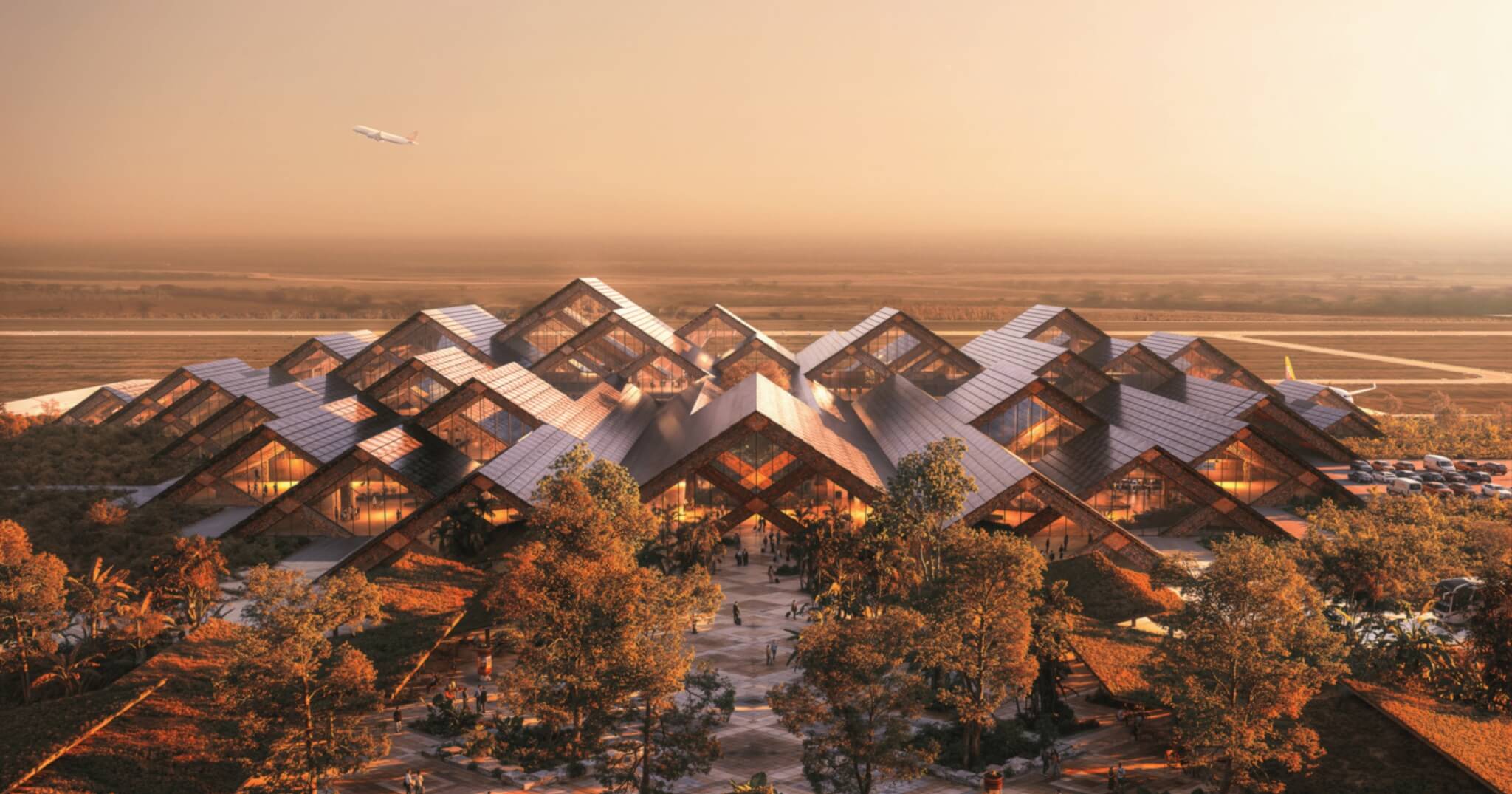Bhutan is gearing up for a major upgrade in connectivity, and it’s doing it in style. The Bhutan Gelephu International Airport, designed by Bjarke Ingels Group (BIG), is set to become a striking blend of traditional Bhutanese craftsmanship and cutting-edge architecture. This project is about creating an experience that reflects Bhutan’s deep cultural roots while embracing the future.

New design of Gelephu International Airport courtesy of https://big.dk/
Gelephu International Airport is Bhutan’s second international airport and will be a crucial part of the country’s growing transportation network. Located near the Bhutan-India border, right next to the Paitha River, it’s a key component of the Gelephu Mindfulness City (GMC) master plan. The numbers tell an exciting story: this airport will be able to handle up to 123 flights daily and is expected to serve 1.3 million passengers by 2040—scaling up to a whopping 5.5 million by 2065.
BIG is known for pushing boundaries in architecture, and this project is no exception. The airport’s design features a modular diagrid structure made from sustainably sourced glulam timber, with intricate wood carvings crafted by Bhutanese artisans. These carvings, inspired by the traditional ‘Kachen’ pillars, represent both structural integrity and spiritual significance. The airport will be a functional work of art, showcasing Bhutanese heritage while delivering top-tier modern infrastructure.

New design of Gelephu International Airport courtesy of https://big.dk/
Modular timber frames will also make future expansions easier for this airport if needed. The design allows different sections to be disassembled and reassembled as needed, ensuring the airport can keep up with increasing passenger demand without requiring massive overhauls—another win for efficiency.
Built for sustainability
Bhutan has long been recognized for its commitment to sustainability—the world’s only carbon-negative country—and this airport is no exception. The terminal will partly be powered by rooftop solar panels, making it energy-efficient. Smart climate-responsive design elements like ventilated roofs, open courtyards, and extended eaves will help keep the terminal naturally cool, reducing the need for excessive air conditioning. The wooden framework itself will help regulate humidity, making the space comfortable for travelers year-round.

New design of Gelephu International Airport courtesy of https://big.dk/
If there’s one thing that sets this airport apart, it’s the emphasis on creating a tranquil, nature-filled experience. The ‘Forest Spine’—a central courtyard running through the terminal—will be filled with native plants, offering a peaceful space for travelers to relax. A treetop walkway and indoor-outdoor lounges will provide opportunities to unwind before a long-haul flight or upon arrival in Bhutan. This airport will feel more like a wellness retreat than a transit hub.
BIG’s vision for Gelephu International Airport shows how architecture can respect heritage while embracing sustainability. When completed, it’s set to become one of the world’s most unique and breathtaking air travel hubs.
Want to stay updated on the latest in architecture, construction, and design? Subscribe to our newsletter for exclusive insights and breaking news—delivered straight to your inbox!



